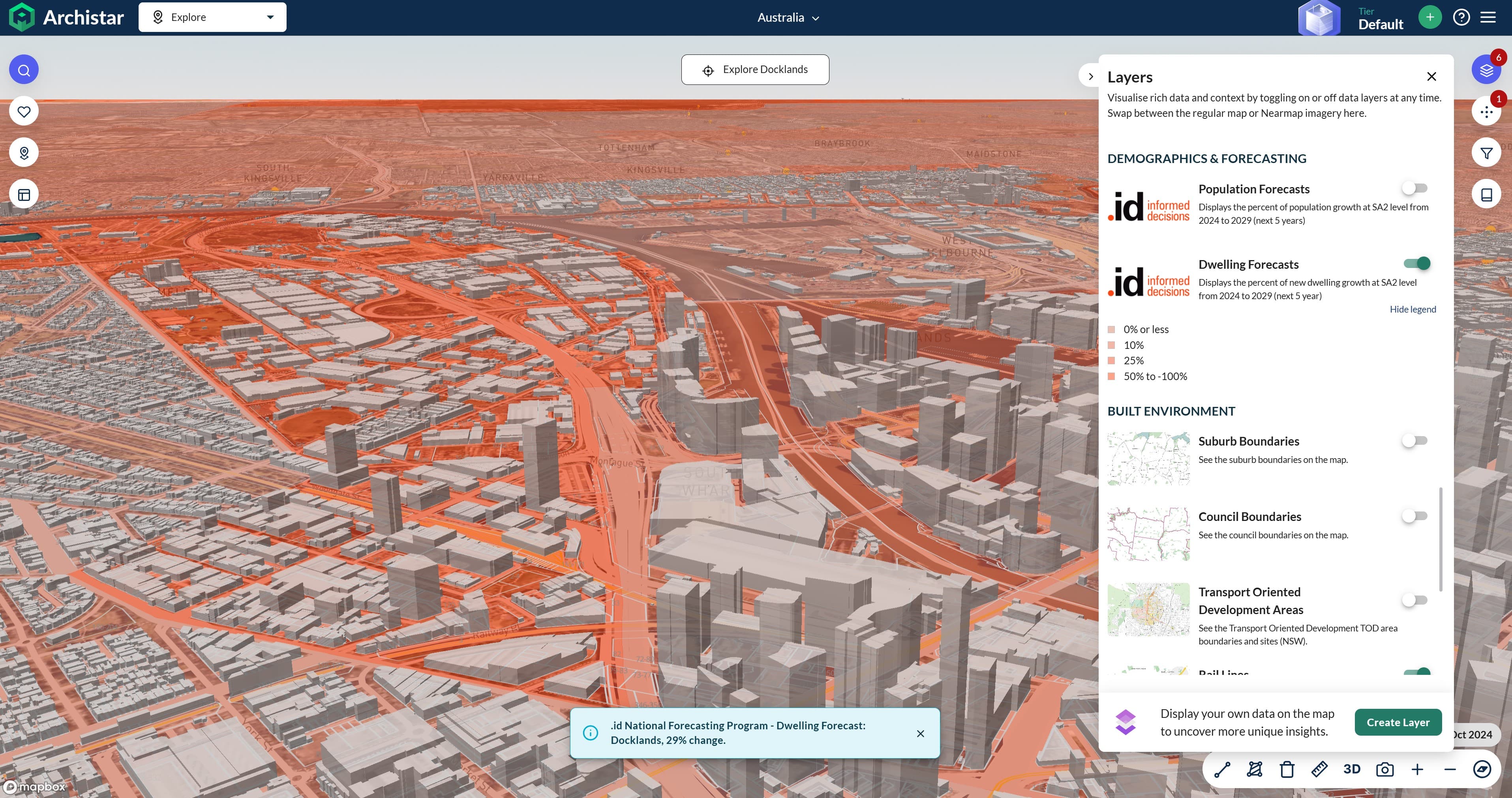In the last two years, Australia’s population growth rate has slowed.
For the first time in 24 years, more people are moving from Australia to New Zealand than visa-versa, according to a recent Statistics NZ publication.
We have looked at the changes in Australia’s population growth trends in previous blogs.
And it prompted us to revisit and update our most popular e-book, 3 growth markets in Australia to explore the impacts of this change.
In the e-book, we use .id population forecasts to chart the course of the Australian population profile over the next twenty years. While the baby boomer ‘bulge’ remains prominent, we identified two additional population peaks that occurred 30 and 60 years after the baby boomers.
So how have big picture population trends changed over the last two years? Here are the top 5 things you need to understand:
- Migration has slowed significantly, but remains above long-term historic averages.
- The long term average from 1976 is around 120,000 new Australians per annum.
- At its peak in 2009, it was close to 300,000 per annum in 2009.
- Currently tracking at just under 170,000 per annum.
- The fertility rate has been relatively stable since 2007 but births are higher than long-term averages.
- Fertility reversed its long-term decline in 2002.
- It rose until 2007 and since then has remained relatively stable.
- There are 50,000 more children born each year in Australia than the long-term average. This is due to there being greater numbers of women of childbearing age.
- The number of deaths have been increasing.
- This is in-line with our ageing population
- Even though we are living longer there are now more people in older age brackets.
- The distribution of population growth is changing.
- Over 70% of overseas migrants now settle in NSW or Vic – up from around 50% in 2012.
- Migration to WA has tanked. Its share of overseas migrants has dropped from 23% in 2012 to under 10%.
- It is a similar story for Queensland – down from 20% to 12%.
- Victoria leads the pack in attracting new migrants from interstate.
- Victoria received 10,000 new residents from other states in the 12 months to June 2015 (in net terms).
- This was higher than any other state, and a significant contrast to the early 90s when it was losing almost 30,000 people each year.
Download the e-book.
.id is a team of population experts, who use a unique combination of online tools and consulting to help organisations decide where and when to locate their facilities and services, to meet the needs of changing populations. Access our free demographic resources here.
Which age groups are growing fastest in Australia? Read our ebook: Three growth markets in Australia











